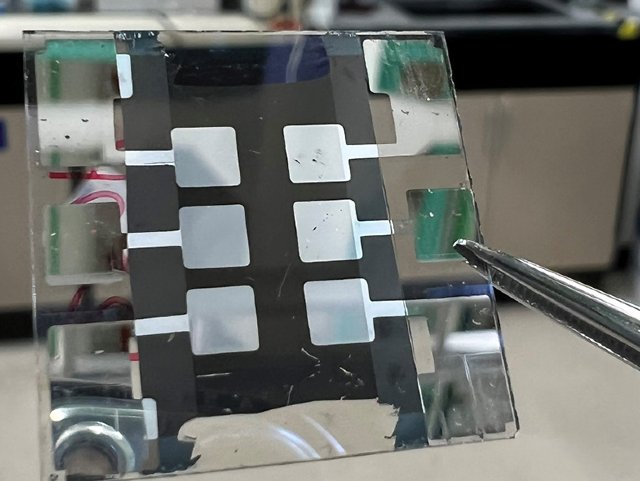
A team of researchers led by the National Renewable Energy Laboratory said they made a technological breakthrough and constructed a perovskite solar cell with the dual benefits of being both highly efficient and highly stable.
The researchers said that a unique architectural structure enabled them to record a certified stabilized efficiency of 24% under 1-sun illumination. The cell also retained 87% of its original efficiency after 2,400 hours of operation at 55 degrees Celsius.
The paper, “Surface Reaction for Efficient and Stable Inverted Perovskite Solar Cells,” appears in the journal Nature. The work was done with scientists from the University of Toledo, the University of Colorado–Boulder, and the University of California–San Diego.
Perovskite refers to a crystalline structure, and has emerged in the last decade as a means to efficiently capture sunlight and convert it to electricity. Research into perovskite solar cells has been focused to a large degree on how to increase their stability.
The researchers used an inverted architecture, rather than the type of architecture that has to date yielded the highest efficiencies. The difference between the two types was defined by how the layers are deposited on the glass substrate.
The inverted perovskite architecture is known for its high stability and integration into tandem solar cells. The NREL-led team also added a new molecule, 3-(Aminomethyl) pyridine (3-APy), to the surface of the perovskite. The molecule reacted to the formamidinium within the perovskite to create an electric field on the surface of the perovskite layer.
The result was a “huge boost” of efficiency and also stability, the researchers said.
The scientists reported the 3-APy reactive surface engineering can improve the efficiency of an inverted cell from less than 23% to greater than 25%. They said the reactive surface engineering stands out as an effective approach to “significantly enhance” the performance of inverted cells to new levels of efficiency and operational reliability.
Funding for the research came from the Center for Hybrid Organic-Inorganic Semiconductors for Energy, an Energy Frontier Research Center within the Energy Department’s Office of Basic Energy Sciences, and from the DOE’s Solar Energy Technologies Office.